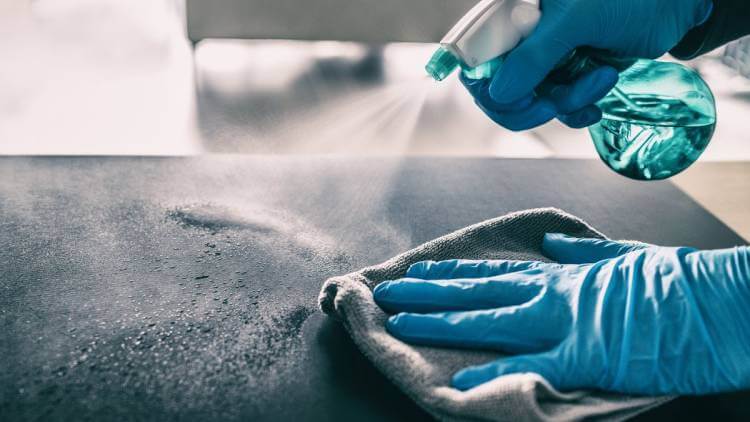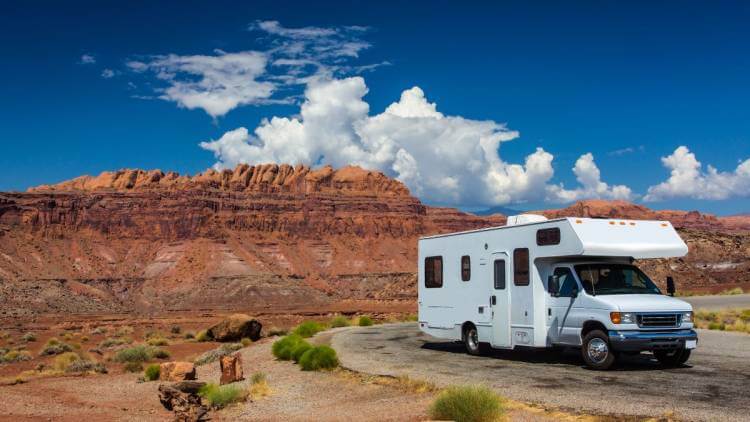
You can purify water with bleach. During emergencies, your regular tap water may not be safe to drink. In these cases, bleach comes to the rescue, but only if you know what you are doing.
Have you ever had to go without water? It’s awful! I once had food lodged in my throat for about 18 hours. Long story short, I couldn’t swallow anything (lucky I could breathe). Saliva from my mouth would get lodged in my esophagus until I puked it up. Not only was I not taking water in, what water I had was leaving my body. I was saved by a trip to the ER, but I’ll never forget how desperate I was for a glass of water.
Why Every Prepper Should Stock Bleach
Bleach can purify water or be used as a disinfectant. Because natural disasters lead to infectious diseases, every prepper should know the value of bleach – and stock it! You want bleach in its purest form, however. Avoid scented bleach.
Bleach is a toxic agent. Its toxicity is what gives it its purifying qualities, but it’s also what makes it (potentially) dangerous. This article will help you understand how to safely use it to make your drinking water safe to consume.
Your drinking water may become unsafe in the case of several events:
- An earthquake,
- A flood,
- A water pipe bursting,
- A sewage line bursting, and
- During hurricanes.
In all these cases, local authorities may recommend using only bottled water or boiling water for a while until the situation is cleared and the water-treatment facilities are back online. In all these cases, you should have enough water to last you for at least three days – as this is the normal time in which most emergency services can fix issues.
However, in cases where there is a blackout, especially a long one, you may have issues boiling your water, and bottled water is only good for a few days.
- Clean, disinfect, and deodorize with the power of Clorox Bleach concentrated formula
- For use in HE and standard washing machines
- A registered disinfectant that kills up to 99.9 percent of household germs and bacteria
- Excellent antibacterial, germicidal and fungicidal properties,
- Perfect for cleaning and disinfecting around your home or office, Easy to grip handle prevents spillage
For these reasons, knowing what other ways there are to filter and sanitize your water can be an essential survival skill – and something every prepper should be aware of. As water sources are plentiful, so are the contaminants that can pollute the water and make it unsafe to drink.
Ways Your Household Water Can Become Contaminated
There are many ways that your water can get contaminated. Even if no warning has been issued in your area, you should know that during any natural disaster, be it a flood, earthquake, or hurricane, you should stop using your tap water until it’s been cleared as safe for use. Here are different ways that your water can get polluted:
- Mechanical/physical pollution,
- Chemical pollution, and
- Microbiological pollution.
Mechanical pollution simply means that particles, such as dust, sand, or bits of metal, are present in the water. If you spot mechanical pollution, you may want to leave the water aside for at least half an hour. This will help sedimentation, as the particles will fall to the button of the container. Alternatively, light particles will surface, and you should remove them before sanitizing the water with bleach.
Chemical pollution is more common in areas where there are farms and factories than in low-rise residential areas. Beware that chemical pollution cannot be removed from water by means of water filtration or even boiling. Traces of oil, agrochemicals, pesticides, and many more can pollute your water irreversibly and make it unsafe to drink. If you suspect your water is chemically polluted, do not use it.
Microbiological pollution is the one that concerns us the most. Although the previous two scenarios of contaminated water are serious, microbiological pollution can have quite serious consequences – persistent diarrhea, nausea, and sore muscles being some of them. Viruses, bacteria, parasites, and protozoa can all be found in water and can cause serious consequences on your health.
In the cases of mechanical and microbiological contamination, you should filter the water first. Using a fine cloth, a coffee filter, or a cotton ball at the bottom of a funnel can all help with removing any particles. Boiling water or sanitizing with bleach in the case of a power outage is the next logical step.
How Bleach Purifies Water

We know that bleach kills bacteria, but for a long while, and to some degree still today, researchers didn’t know exactly how bleach did this. New research seems to have found an answer, however:
The researchers found that hypochlorous acid, the active ingredient in bleach, causes the unfolding of proteins in bacteria in much the same way that heat stress or fever does. Those denatured proteins then clump together irreversibly into a mass in living cells, similar to what happens to proteins when boiling an egg, the researchers explained.
https://journals.lww.com/oncology-times/fulltext/2008/12250/new_research_shows_why_bleach_kills_bacteria.9.aspx
Bleach can attack and disintegrate the protein layer found around cells and microorganisms – even your own cells have this protein layer.
A solution of sodium hypochlorite, bleach dissolves in water to create hypochlorous acid, which attacks proteins by disintegrating amino acids that proteins are made from. Once the amino acids have been disintegrated, the proteins no longer work – after all, it is their surface structure that gives them functionality and that shapes microorganisms, such as bacteria and viruses. Without this protective layer around them, bacteria burst, and viruses cannot use their surface proteins to attach to the host cells.
In water, bleach works the same way. Once it is in water, it starts dissolving fairly quickly. It then works its way through to microorganisms, single-celled living beings, and disintegrates them. Their basic components remain the same, but once detached from one another, they are useless and cannot cause harm.
Water that is treated with bleach is then left to stand for around half an hour or even more for the bleach to evaporate and come down to levels that are safe to be ingested by humans. For this reason, the recommendations laid out by the EPA are to be followed strictly.
After all, using too much bleach and not letting it sit for long enough could result in the same disintegrating effect happening to the cells in your digestive tract.
How to Purify Water with Bleach
To keep both you and the water safe, there are strict measurements that are to be followed. Bear in mind that the reaction that happens is chemical, so it may take longer with very cold water. It may also take shorter in very hot water, but in this case, some germs may survive if the bleach evaporates too quickly. It is also important to use non-scented, chlorine-based bleach only, as any other kind would chemically pollute your water. Here are the steps to take when purifying water with bleach:
- Pour water into the desired container.
- Add the appropriate amount of unscented bleach.
- Shake well.
- Wait 30 minutes.
- Do the sniff test – if the water has no smell of bleach, add ½ of the recommended amount again. Wait for 15 more minutes and sniff again. If the water has a very faint smell of chlorinated swimming pool water, leave the container open until the smell is gone.
That’s it! You’re set to enjoy safe drinking water.
Before using bleach, you should check its concentration levels. Bleach mostly comes in 6%-8.25% solutions. Here are general recommendations on how much bleach to add to water to make it safe to consume:
| Volume of Water – Imperial | 6% Bleach to Add (in Drops) | 8.25% Bleach to Add (in Drops) | Volume of Water – Metric |
|---|---|---|---|
| 1 quart | 2 drops | 2 drops | 1 liter |
| 1 gallon | 8 drops | 6 drops | ~5 liters of water |
| 2 gallons | 16 drops | 12 drops | ~10 liters of water |
| 4 gallons | 32 drops | 24 drops | ~20 liters of water |
| 5 gallons | 40 drops | 30 drops | ~25 liters of water |
| 10 gallons | 80 drops | 60 drops | ~50 liters of water |
How Long Does Bleach Last?
Another thing to remember before adding bleach is to check its best-by date. The amounts outlined above are for bleach that is within its shelf life. Many people do not know that bleach has a shelf life at all.
In general, bleach retains full potency for up to 6 months after the production date if stored at room temperature. After this period, bleach loses around 20% of its effectiveness every year, increasing the risks of catching water-borne illnesses.
Sanitizing with Bleach

Having bleach around for too long is not so good, so make sure to rotate the bleach in your prepper’s storage every six months. The bleach you take out is still good for clothes and cleaning, but the bleach intended to keep your water sanitary should be replaced every six months. Having a good batch of bleach around is essential, especially at times of a crisis. Below are ways that you can use bleach in times of both long and prolonged crisis, power outages, as well as when living off-grid:
- Sanitize RV Water Tank with Bleach,
- Sanitize Water Containers with Bleach,
- Sanitize Dishes with Bleach,
- Sanitize Surfaces with Bleach, and
- Remove Mold and Mildew with Bleach.
Studies have shown that bleach can kill:
- S. Aureus,
- Bacillus Atrophaeus,
- Mycobacterium avium-intracellulare,
- M. Tuberculosis,
- Clostridium Difficile,
- HIV,
- Candida,
- Salmonella choleraesuis,
- P. Aeruginosa,
- L. Pneumophila,
- Legionella,
- In combination with other active oxidizing ingredients, it can also kill:
- M. Chelonar,
- Poliovirus,
- E. coli,
- Candida albicans, and
- Enterococcus Faecalis.
Sanitize RV Water Tank with Bleach

If you happen to live off-grid and in your RV, you may have noticed that the water from the RV water tank gets a funky smell after a while. This is because bacteria and algae can keep growing in the water tank even if you are very careful with how you fill the tank with water.
To remove the smell and ensure you drink safe water, use the table above, compare it to the water tank size, and put in an appropriate number of drops. As you cannot shake the water tank, leave the water in for at least a few hours in hot weather or a whole day in cold weather.
Sanitize Water Containers with Bleach
Your water containers can also be sanitized with bleach. In this case, make a stronger solution, pour it into the water container, shake well to cover the walls of the container in the solution, and then leave it with the lid on for a few hours. Rinse well.
Sanitize Dishes with Bleach
Dish washing can be challenging in times of a crisis. As you have to conserve water, you use less of it and risk germs building up on your dinnerware. To prevent this, soak your dishes in some warm water with a few drops of bleach added and let them sit in the solution for 30 minutes at least.
Sanitize Surfaces with Bleach
Bleach is also an excellent cleaning agent. Simply dissolve some bleach (⅓ cup per bucket of water) and wash down the surfaces. Never mix bleach with any other cleaning agents, as this may create chlorine gas – a dangerous substance that can cause chemical pneumonia and suffocation.
Remove Mold and Mildew with Bleach
Since your AC and heating may not work in times of crisis, you may notice that mold and mildew grow in corners or at the bottom of outside walls. To remove mold and prevent it from coming back for a while, you should dissolve some bleach in water, get the area wet and remove the solution from the area with a damp cloth.
Summary
Bleach is a remarkable product to have in the house, especially in the case of a crisis or water distress. Burst pipes, pollution from local farms and other industrial sources, as well as from stagnant water bodies nearby, are not common, but they still happen. In cases like this, it is always good to have ways to disinfect drinking water – adding bleach is one way to do this.

